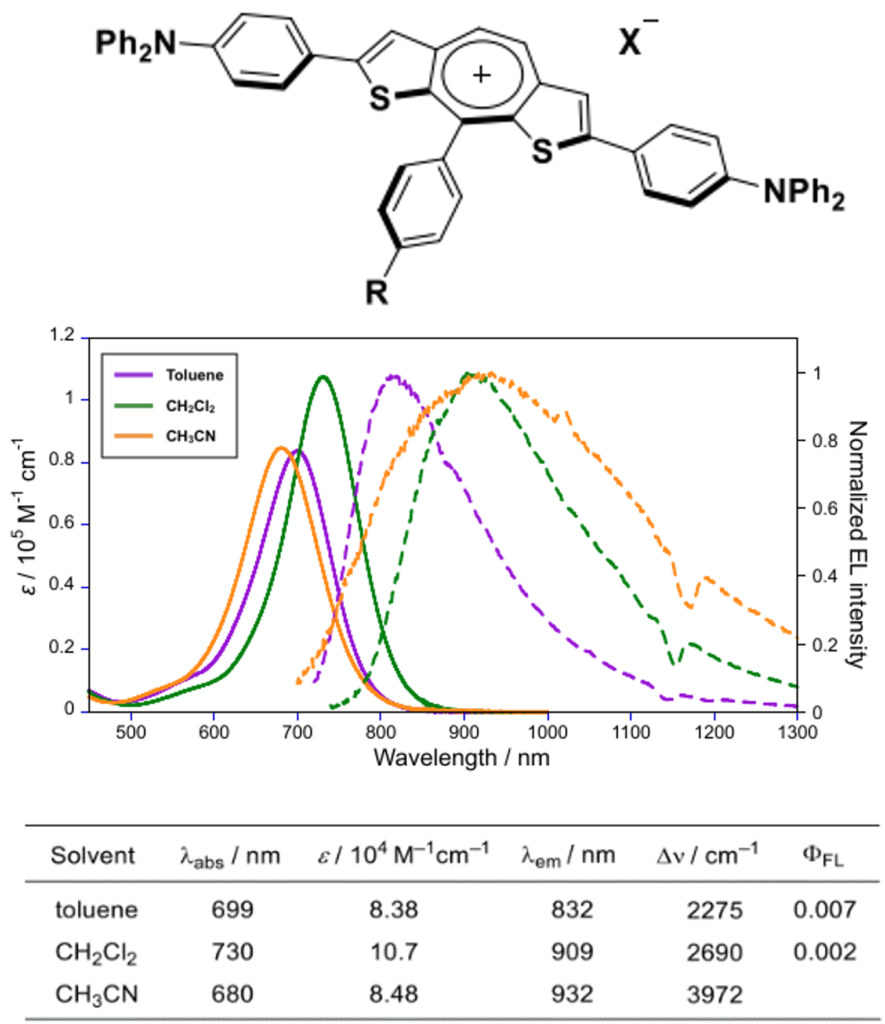Advantages
- A group of molecules that absorb light around 700 nm, which is in the near-infrared region, and show fluorescence at 800-900 nm.
- High molar extinction coefficient (ε) and large Stokes shift
- Strong fluorescence not only in solutions but also in thin films.
Background and Technology
Compounds that absorb light in wavelength regions invisible to the naked eye, such as the ultraviolet and near-infrared regions, are expected to be useful as security inks and sensor materials. Because of the weak absorption of hemoglobin and water and the high permeability of cellular tissues, the near-infrared region is called as the optical window of living systems. Therefore, molecules that absorb and emit light in this region have potential applications in the biological fluorescence imaging, photodynamic therapy, and photothermal therapy.
Patents
- Pending (Unpublished yet)
Principal Investigator
Masahito MURAI (Graduate School of Science, Nagoya University)
Current Stage and Next Step
- Currently, new tropylium-based near-infrared fluorescent dyes have been synthesized and their fundamental photophysical properties have been evaluated.
- We are looking for collaborative partner companies to study, evaluate, and develop applications using these compounds and derivatives.
Project.BK-04566



